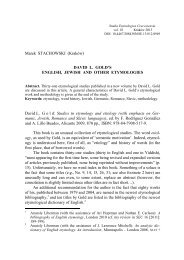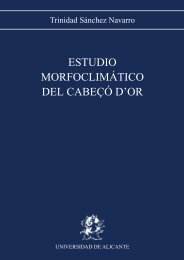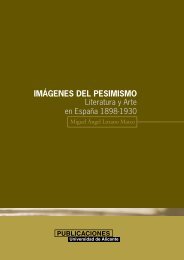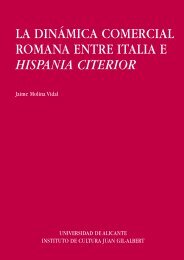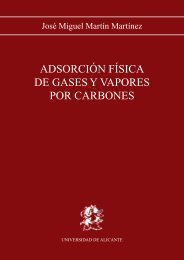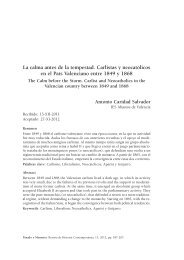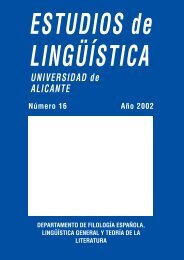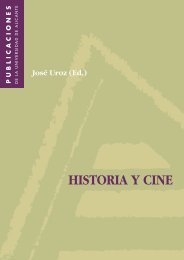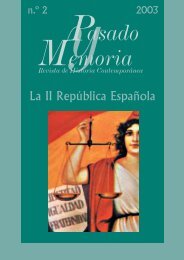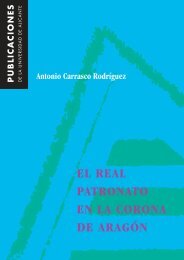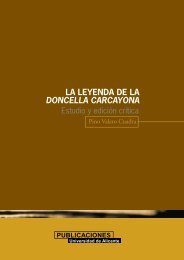English and Galician in the Middle Ages - Publicaciones ...
English and Galician in the Middle Ages - Publicaciones ...
English and Galician in the Middle Ages - Publicaciones ...
Create successful ePaper yourself
Turn your PDF publications into a flip-book with our unique Google optimized e-Paper software.
<strong>English</strong> <strong>and</strong> <strong>Galician</strong> <strong>in</strong> <strong>the</strong> <strong>Middle</strong> <strong>Ages</strong>:<br />
A Sociohistorical Survey<br />
Begoña Crespo García<br />
would not be carefully studied until <strong>the</strong> 16 th century. Despite<br />
<strong>the</strong> fact that <strong>the</strong> Renaissance expansion of knowledge acted<br />
on Castilian, it did not touch <strong>Galician</strong> at all. The st<strong>and</strong>ardisation<br />
of <strong>the</strong> latter began <strong>in</strong> <strong>the</strong> 20 th century <strong>and</strong> is still a matter<br />
of debate. STABILITY is ano<strong>the</strong>r criterion that can be used<br />
to depict diglossia. In Engl<strong>and</strong> it took around three centuries<br />
to overcome this language confl ict. In Galicia diglossia is still<br />
present.<br />
GRAMMAR st<strong>and</strong>s for <strong>the</strong> differences or similitudes between<br />
<strong>the</strong> grammatical structures of As <strong>and</strong> Bs. The grammatical<br />
differences between <strong>English</strong> <strong>and</strong> French are opposed to <strong>the</strong><br />
lesser number of differences <strong>in</strong> <strong>the</strong> <strong>Galician</strong>-Castilian pair.<br />
LEXICON implies <strong>the</strong> existence of synonyms of common concepts<br />
with two realisations: oral or B version <strong>and</strong> its equivalent<br />
<strong>in</strong> writ<strong>in</strong>g or A version. The existence of paired items with<br />
different sociol<strong>in</strong>guistic connotations illustrates this aspect:<br />
<strong>English</strong> (animal)-French (meat): sw<strong>in</strong>e -pork, ox- beef, calf -<br />
veal, sheep- mutton. Social distance is l<strong>in</strong>guistically refl ected<br />
<strong>in</strong> <strong>the</strong> coexistence of two nouns of different orig<strong>in</strong> <strong>and</strong> semantic<br />
referent: <strong>the</strong> noun of Saxon orig<strong>in</strong> names <strong>the</strong> animal<br />
<strong>and</strong> <strong>the</strong> French orig<strong>in</strong> term refers to <strong>the</strong> correspond<strong>in</strong>g meat<br />
(Hughes, 2000).<br />
CONTENTS<br />
35



